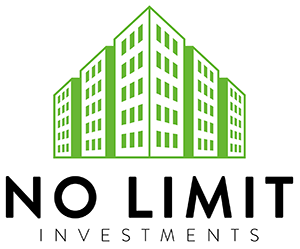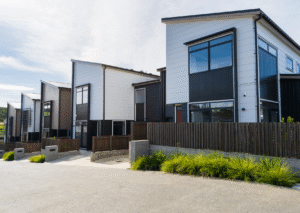What Is a Real Estate Line of Credit and How Does It Work?
A real estate line of credit (RELOC) is a flexible financing tool that allows property owners and investors to access funds based on the equity in their real estate. Similar to a credit card, it offers a revolving limit that can be drawn upon, repaid, and reused as needed. The key distinction is that this credit is secured by real property, usually residential or investment property.
When approved for a RELOC, a lender determines your available credit limit by evaluating:
- The loan-to-value (LTV) ratio of your property
- Your creditworthiness and income stability
- The property’s market value and equity position
Borrowers can use these funds for property acquisitions, renovations, or refinancing. Unlike traditional term loans, interest is paid only on the amount withdrawn. This flexibility makes RELOCs particularly attractive to real estate investors who want to keep their cash flow agile while expanding portfolios (Consumer Financial Protection Bureau, 2023).
Why Should Real Estate Investors Consider a Line of Credit?
A real estate line of credit allows investors to capitalize quickly on opportunities without waiting for traditional loan approvals. It can fund repairs, bridge down payments, or cover short-term gaps between sales and acquisitions.
Some of the top advantages include:
- Speed: Immediate access to capital to close deals quickly.
- Flexibility: Withdraw only what you need and pay interest solely on that amount.
- Reusability: As you repay, your credit becomes available again.
- Strategic leverage: Helps manage liquidity and support multiple projects simultaneously.
This type of funding complements other financing tools such as fix & flip loans, buy & hold mortgages, and BRRRR financing, which No Limit Investments offers to help clients move from short-term opportunities to long-term wealth strategies.
How Can a Real Estate Line of Credit Support Short-Term Projects?
Investors often face timing issues, properties need urgent repairs before being sold or refinanced. A RELOC provides quick access to capital for:
- Renovations and remodeling
- Landscaping and curb appeal improvements
- Emergency repairs that preserve value
When paired with fix & flip loans, investors can use a RELOC to bridge funding gaps, buy materials, or make upgrades that increase the property’s resale value. This combination shortens project timelines and maximizes return on investment.
For example, if an investor identifies a distressed property with high potential, a RELOC allows for immediate purchase and repair, while a fix & flip loan can provide structured capital for the renovation phase. Once the property sells, the RELOC can be replenished for the next project.
How Does a Real Estate Line of Credit Fit into Long-Term Investment Strategies?
For long-term investors, a RELOC acts as both a safety net and a growth engine. It enables property owners to:
- Tap equity without selling assets
- Finance property upgrades that boost cash flow
- Reinvest profits into additional real estate
A RELOC can work seamlessly with buy & hold mortgages and cash-out refinance strategies. Investors may use a line of credit for short-term needs while maintaining stable, fixed-rate financing for their portfolio properties. When combined effectively, these tools can help scale a real estate business without overextending cash reserves.
Moreover, No Limit Investments offers DSCR loans (Debt Service Coverage Ratio loans) that allow rental income to qualify investors for new loans. When paired with a RELOC, these financing options strengthen both liquidity and acquisition capacity, allowing for sustainable portfolio growth.
How Does BRRRR Financing Relate to a Real Estate Line of Credit?
The BRRRR method, Buy, Rehab, Rent, Refinance, Repeat, is one of the most popular strategies among modern investors. A real estate line of credit can play a critical role during each stage:
- Buy: Use RELOC funds as a down payment or to cover closing costs.
- Rehab: Draw from the line of credit to finance property repairs.
- Rent: Improve the property’s cash flow through upgrades funded by RELOC capital.
- Refinance: Refinance into long-term financing such as a buy & hold mortgage or cash-out refinance.
- Repeat: Use the new equity to replenish your RELOC and move on to the next investment.
This strategy not only recycles capital but also compounds wealth over time. No Limit Investments supports this through BRRRR financing options that align with investor goals for scalability and efficiency.
What Are the Key Financial Benefits of Using a Real Estate Line of Credit?
A real estate line of credit provides measurable advantages for investors seeking to balance leverage and liquidity. These include:
- Interest savings: Pay interest only on the funds you actually use.
- Portfolio flexibility: Shift funds between properties or projects as opportunities arise.
- Credit improvement: Proper use of RELOCs can strengthen credit history over time.
- Tax advantages: Interest on real estate credit lines may be deductible for investment purposes (Internal Revenue Service, 2024).
Additionally, a RELOC offers a way to access capital without liquidating other investments, preserving long-term gains while maintaining operational agility. It’s an essential tool for investors focused on real estate financing solutions that adapt to dynamic market conditions.
How Can You Qualify for a Real Estate Line of Credit?
While each lender’s requirements vary, general qualifications include:
- A strong credit score (typically above 660)
- Verifiable income or rental revenue
- A property with sufficient equity, usually 20–30% or more
- Acceptable loan-to-value (LTV) ratio, often capped around 80%
Investors may strengthen their applications by maintaining consistent financial records and working with lenders who understand real estate investment structures. No Limit Investments’ credit & debt advisory services can help borrowers optimize their credit profiles, organize documentation, and determine the best mix of leverage across multiple properties.
How Does a Real Estate Line of Credit Compare to Other Funding Options?
While RELOCs offer flexibility, investors should also evaluate other financing paths that align with their goals. Below are common options and how they compare:
- Fix & Flip Loans – Ideal for short-term renovation projects; they provide fast funding and predictable payoff timelines.
- Buy & Hold Mortgages – Best for long-term investors seeking stability and consistent monthly payments.
- BRRRR Financing – Designed for investors who want to reinvest equity, build recurring income, and scale their portfolio strategically.
- DSCR Loans – Perfect for rental property investors; qualification is based on rental income rather than personal income.
- Cash-Out Refinance – Allows property owners to convert existing equity into liquid capital for reinvestment or improvements.
- New Construction Loans – Tailored for developers; provides funding for ground-up projects from land acquisition through completion.
A real estate line of credit complements these tools rather than replacing them. It offers ongoing liquidity between transactions, while structured loans provide stability for specific assets. With growth & development services, No Limit Investments helps clients determine how each financing type supports their overall investment roadmap.
What Are the Risks and How Can You Manage Them Responsibly?
Like all forms of credit, RELOCs require discipline. Risks include:
- Variable interest rates: Payments may increase with market shifts.
- Over-leveraging: Borrowing too aggressively can impact long-term stability.
- Equity exposure: Property values affect available credit and repayment ability.
To manage these responsibly:
- Borrow only what aligns with your cash-flow projections.
- Maintain emergency reserves for unexpected vacancies or repairs.
- Partner with experienced advisors to ensure balanced leverage.
Working with a professional lender like No Limit Investments, which offers both financing and advisory services, ensures your credit strategy supports, not jeopardizes, your portfolio’s health.
How Can You Take the Next Step Toward Smarter Real Estate Financing?

Building a sustainable investment portfolio requires tools that evolve with your goals. A real estate line of credit empowers you to act quickly, reinvest strategically, and protect your liquidity while growing your assets.
Whether you’re flipping homes, building rentals, or refinancing for expansion, No Limit Investments provides a comprehensive suite of funding solutions designed for today’s real estate investors.
Explore flexible options such as:
- Fix & Flip Loans
- Buy & Hold Mortgages
- BRRRR Financing
- Cash-Out Refinance
- DSCR Loans
- New Construction Loans
- Business Credit Facilities
- Credit & Debt Advisory
- Growth & Development Services
Visit No Limit Investments to connect with a lending expert and discover how customized real estate financing can take your investments to the next level.
Final Thoughts
A real estate line of credit is more than just a financial instrument, it’s a strategy for expansion. By combining flexibility, equity leverage, and tailored financing, investors can grow portfolios without unnecessary risk. Aligning this approach with professional support from No Limit Investments helps transform equity into opportunity, empowering investors to build wealth on their own terms.
Works Cited
Consumer Financial Protection Bureau. What Is a Home Equity Line of Credit (HELOC)? CFPB, 2023, https://www.consumerfinance.gov/ask-cfpb/what-is-a-home-equity-line-of-credit-en-81/.
Internal Revenue Service. Publication 936 (2024), Home Mortgage Interest Deduction. U.S. Department of the Treasury, 2024, https://www.irs.gov/publications/p936.
Frequently Asked Questions:
- What is a real estate line of credit?
A real estate line of credit (RELOC) is a revolving credit facility secured by your property’s equity. It allows investors to withdraw funds as needed for purchases, renovations, or refinancing, paying interest only on the amount used.
- How does a real estate line of credit differ from a traditional mortgage?
Unlike a traditional mortgage, which provides a one-time lump sum, a RELOC offers ongoing access to funds. Investors can draw, repay, and reuse the available credit as projects evolve.
- Can I use a real estate line of credit with other investment loans?
Yes. A RELOC works effectively alongside other financing options such as fix & flip loans, buy & hold mortgages, BRRRR financing, and DSCR loans to provide liquidity and scalability in your investment strategy.
- What are the main benefits of using a real estate line of credit?
Key benefits include flexible access to capital, interest savings, liquidity for multiple projects, and the ability to leverage existing equity without selling your property.
- Where can I find flexible financing solutions for real estate investments?
Visit https://nolimitinvestments.net/ to explore tailored funding programs such as cash-out refinance, new construction loans, and business credit facilities, all designed to help investors grow their portfolios strategically.







